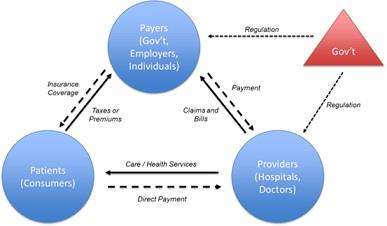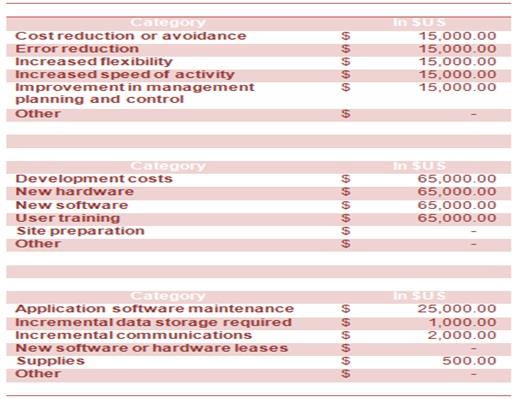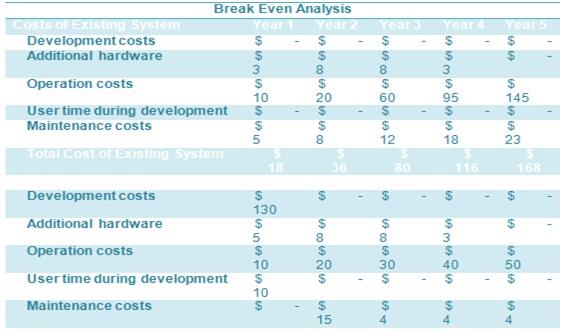HE360 Healthcare Economics - Ashworth College
EXPERTSMINDS.COM ACCEPTS INSTANT AND SHORT DEADLINES ORDER FOR HE360 HEALTHCARE ECONOMICS ASSIGNMENT - ORDER TODAY FOR EXCELLENCE!
ASSIGNMENT 04
Part A Introduce the topic of healthcare economics by providing the following information.
Introduction
Healthcare economics can be referred to a particular branch of economics which mainly deals with problems related to effectiveness, efficiency (Sloan, 2017). Also, it is concerned with the value and behaviour in the production and consumption of health and healthcare. From a broader perspective, it can be said that it is the role of the health economists to examine the functioning of healthcare and also assess the behaviour causing affecting health such as addiction to smoking. The assignment presents thoughtful insight into the general idea of this discipline. It further discusses in detail the evolution and present day status, supply and demand and the relationship of economics and healthcare.
Question 1. Provide a broad description of its definition, evolution, present day status, and future direction.
To understand Healthcare Economics the crucial need is to first understand about health and healthcare. According to World Health Organization (WHO) the state of a person who is physically and mentally fit with almost nil disease and infirmity is called to be a healthy person. But Health can also be defined as the ability to adapt and manage physical, mental and social challenges in the always changing life. Healthcare is nothing but the maintenance of the health. Prevention, diagnosis, treatment in regards to the health of human beings is basically the healthcare (Wendel, Serratt & O'Donohue, 2017). Now healthcare economics is a section of economics which deals with the efficiency and the effectiveness values and the general behaviour in the production of health and healthcare.
From 1901 to 1940 the healthcare sector took a giant leap, the revolution happened. With greater knowledge about the diagnosis and treatment healthcare economics came into well known existence (Popesko, Novák & Papadaki, 2015). Technological advancements in the healthcare sector was an add on to the uplift of this as well. With the rising costs daily healthcare now is a concern for individuals. The endless tests, baffling jargons, prodding doctors cause the rise for the cost for individuals. Future of the healthcare is no wonder going to be great but with rising costs of the healthcare products, diagnosis, treatments can affect the economics in the long run.
Question 2. Include the goal and/or overarching themes of healthcare economics.
Healthcare economics states how individuals chose and minimise costs and maximise profit or utilities within a set of rules and prices. Every economics include price levels, national income, level of income as these help to understand the level of the healthcare economics. The main goals of healthcare economics is to know the relationship between economic growth and health, health sector budgets and plans, National health systems, equity in health outcomes and in health care and international health care. With every approaching day it is evident that the life expectancy is increasing which in turn is enhancing the health researches having higher expectations of people with public awareness and medical advancements. Now healthcare economics helps individuals to help find out the true costs of healthcare and estimate the real costs. A particular policy has relative costs and benefits which the economists find out in order to know the present day economics (Nachum, 2018). In the healthcare sector the analysis of user charges, time, distance, different costs associated in total gives an idea of the trend going on in the healthcare industry. Healthcare needs to identify also the basic needs of diseases and health identify the growth determinants, economic development, elements of health expenditure by use of macro economics, to understand the healthcare characteristics and related activities, to understand the demand and supply in the particular sector.
Part B Provide a detailed description of supply and demand in the health care industry including the following information.
Question 1. Describe supply and demand facets in the healthcare domain with an emphasis on influential factors, health capital, and market efficiencies. Include information about health insurance and associated costs.
The most influential factors that effect the healthcare industry are technology, health products and service prices, market power, market power, health insurance coverage, demographics and patient characteristics. Technology has the most significant effect on today's healthcare economics as it helps to meet the supply and demand criteria in the scenario (Gupta et al, 2017). The products and services account to around 10% to 25% of spending growth with respect to healthcare products only. Health insurance is another big player in this as individuals seek most efficient player in the market. They try to find out ways to understand the most optimum option. Supply and demand in the market depends on how the individuals respond to technology, healthcare products, insurances and market efficiencies. Demand analysis should incorporate the individual and supplier's induced behaviour, time, cost, health payment system. On the other hand supply analysis should have the physical resources resource and costs, estimation of short term and long term cost curve.
SAVE YOUR HIGHER GRADE WITH ACQUIRING HE360 HEALTHCARE ECONOMICS ASSIGNMENT HELP & QUALITY HOMEWORK WRITING SERVICES OF EXPERTSMINDS.COM
Question 2. Provide a clear and comprehensive rationale about how the relationship of economics and healthcare evolves.
Health care has suffered a revolution by the end of World War II and has become a leading economic as well as political issue. Nations experienced rapid increased in expenditure on healthcare with health sectors facing great level of rationalization, expansion and organization. If more number of years were added to an individual's lifetime then there is possibility of that person staying in the stage of being sick for more years and it will hence benefit the hospitals and more prescribed drugs will be consumed (Stephens, 2015). It will be an advantage for the engineering and construction industries as well due to the need for building more hospitals. However, decisions about how to allocate doctors and price the medicines are based on economics principle. These questions along with healthcare relate questions will become related to economics. To ensure financial stability of health systems, it has been prioritized and moved to the top of the policy agenda across the OECD area. Investment in healthcare needs to be addressed in regards to the relation between healthcare and economy (Ubel, 2015). Health and economic performance are interconnected as wealthier countries have healthier population whereas, poverty reduces life expectancy. Some countries have banned smoking in famous pubs with institutional backing. Countries having lower health and education conditions suffer the most. An economic proof verifies this.
Part C Provide a clear and comprehensive description about health insurance markets. Include in your discussion how insured, uninsured, and underinsured individuals obtain and maintain health insurance coverage and services.
The health insurance market is referred to a platform offering insurance plans to individual people, families and small businesses. The Health Insurance industry forms a crucial part of the Australian health system which is known to be providing 45.5% of the population with an insurance coverage. With rise in premiums, industry revenue and profit have increased. There are several threats and opportunities as higher private insurance premiums have strengthened premium income and revenue of the industry (Sen, 2018). As the cost of health care has risen so the older people has promoted themselves for increasing their cover. Rising premiums and investment returns will continue the growth. Individuals having private health insurance hold combined cover policies including general and hospital treatment. Only one third of the working population have income protection insurance in Australia. The act named Affordable Care Act has changed the face of health insurance market with benefits for health insurance which are affordable for underinsured and insured individuals (Kettlewell, 2018). It has reduced uninsured people by 20 million. It helps the insured people who are stated as underinsured with health benefit package, cost-sharing reductions. There is little to no cost sharing for people covered by the law's Medicaid expansion.
Conclusion
The study dealt in detail the health care economics, its evolution and present day condition with the goals of healthcare economics. It further went on to provide a detailed description of the supply and demand in the health care industry emphasizing influential factors, health capital and market efficiencies. The assignment concluded with a rationale about the evolution of relationship between healthcare and economics with a clear picture of the health insurance market. It explains how insured, uninsured and underinsured people obtain health insurance coverage. Australia's underinsurance may affect their income level and they should have different types of coverage mainly medical insurance.
ORDER NEW COPY OF HE360 HEALTHCARE ECONOMICS ASSIGNMENT AND SECURE HIGHER MARKS!
ASSIGNMENT 08
Introduction
Healthcare economics is another extension of economics subject, which aids in studying the factors influencing the economic stability of the healthcare sector and thus, maintain ean effective balance amongst all. The healthcare economics industry provides aids and services that help the individual stay healthy and receive the best quality of care whenever they are admitted to healthcare homes (Hunt, 2018). It includes commercialization of goods and services for proper maintenance and re-establishing health.
Part A Provide a clear and comprehensive list and description of healthcare industry key players/leaders describing how they impact healthcare economics.
The key players of the healthcare industry, which has high impact on the healthcare economics largely constituted by four elements. Among the four elements, the first and the most important element, which forms the base of the healthcare industry are the patients. Patients are the individuals, who takes medical facilities from the providers and is much less complicated in comparison to the other three elements of the healthcare industry. Generally, the patients are insured under government or their employer, however the patients have to pay for the coverage on their own. In Australia, there are still a number of citizens, who are not insured but the scenario is changing quickly with the variety of governmental acts. The next element in the healthcare sector are the providers. These are the institutions, which takes care of the patients and buy products from the vendors. The providers charges sufficient amount of money from the patients for the care that is given to them. In Australia, there are 58% of non profit healthcare providers, 21% profit healthcare providers and again 21% of governmental healthcare providers.
Payers are the third element in the healthcare sector (Pittet, 2018). Payers are the institutions, which pays the providers for the healthcare services. Insurance carriers, the government and private employers and even individuals are included in this. However, the majority of the healthcare in Australia, is paid by government and employers. About 60% of the Australians receive the healthcare , from their employers. While on the other hand, government covers 33% of the healthcare, where health coverage is given to older people and people with limited income. The last element in the healthcare sector are the vendors and they sell pharmaceutical products, medical devises, services and solutions to the providers for quick healing of the patients.

Fig 1 Interaction of the patients, payers and providers
Part B Provide a clear and comprehensive description explaining government intervention and regulation regarding healthcare reform. Include in your discussion the Patient Protection and Affordability Care Act.
Government intervene in the healthcare sector for addressing inefficiency. In the Australian market, the resources are not allocated properly in accordance to the needs and requirements of the people. To combat such a situation, various activities has been adopted by government, which are taxation, regulation and subsidies. The main goal of the government behind its intervention regarding healthcare reform is maximization of social welfare. (Alvarez et al., 2018.p. 111).
For social welfare, government has undertaken many health care acts. In the healthcare sector, one of the noteworthy act in recent times is the Patient Protection and Affordability Care Act. This act was started in America in the year 2010 by the Obama. Implementation of this act has successfully increased the number of citizens of American with health insurance and reduction in the costs of the health related problems. Similar kind of act was also enacted in Australia, which is known as Health Practitioner Regulation National Law Act 2010. This was passed by Victoria and is the national law of the country, which provides almost free checkups and treatments associated with any health related problems. This law facilitates workforce mobility throughout Australia for the purpose of reduction of the burden for health practitioners. This law focuses on the development of a responsive, flexible, and sustainable health workforce in Australia for increasing innovation in the services delivered by the practitioners (Castellanos et al., 2018.p. 2650). Thus, government intervention in the healthcare sector has resulted in benefits for the common people.
NEVER BE CAUGHT IN PLAGIARISM, AVAIL HE360 HEALTHCARE ECONOMICS ASSIGNMENT HELP SERVICE OF EXPERTSMINDS.COM AND SAVE HIGHER MARKS!
Part C Choose any disease of interest to you other than HIV/AIDS, which is detailed in the text.
Question 1. Provide an example of a disease, its prevention, prevalence, and epidemiological past, present, and future.
For this study, the researcher has chosen the disease caused by Ebola virus. In recent times, this has become one of the most significant and deadly disease across the world. The Ebola virus disease is a zoonotic disease, which is a deadly virus syndrome. It is caused by infection, which happens due to one of the strains of the virus Ebola. This disease originated in Africa, however within the next few years it got spread to different parts of the world, which includes Europe, Australia, America and similar others. This indicates that the virus is not only a threat in certain parts of the world, but it has shown its hazardous effects internationally (Ribner, 2018).
Thus, this virus has a global threat and should be dealt seriously. The economic and social impact of the Zoonotic diseases is as high as 80%, and this is because the human pathogens are composed of zoonotic origin. The transmission of this virus takes place within humans due to contact of bodily fluids of infected individuals at the time of infectious phase of the deadly disease. The spread of the disease can happen through community spread or nosocomial means. During the early stages of the disease, lack of knowledge about the syndrome among the workers of the healthcare sector, poor funding, insufficient resources has caused disruption in the diagnosis of the disease. The virus is subjected to immune suppression and evasion, hypovolemic shock, coagulopathy, failure of multiple organ and even death in 90% of the cases (Brown, 2018). Unavailability of a vaccine and a proper cure for this syndrome makes it one of the most deadliest diseases in recent times , especially in endemic countries.
Question 2. Perform a cost-benefit analysis of this disease prevention and treatment.


Conclusion
This study deals with the healthcare economics and the key players of the healthcare industry, which has high impact on the healthcare economics. For the purpose of social welfare and establishing equality in the healthcare sector, there are evidence of governmental intervention and due to this a number of different acts has been established by the government. The last section deals with the deadly disease Ebola virus and the ways by which it has become a global threat and various ways to increase its prevention and control.
SAVE DISTINCTION MARKS IN EACH HE360 HEALTHCARE ECONOMICS ASSIGNMENT WHICH IS WRITTEN BY OUR PROFESSIONAL WRITER!
Acquire our Ashworth College Assignment Help and Homework Help services for its related courses and units such as:-
- HE310 - Survey of Healthcare Management Assignment Help
- HE320 - Medical Sociology Assignment Help
- HE330 - Healthcare Delivery Systems Assignment Help
- HE350 - Healthcare Human Resource Management Assignment Help
- HE360 - Healthcare Economics Assignment Help
- HE380 - Managed Healthcare Assignment Help
- HE400 - Cultural Diversity in Healthcare Assignment Help
- HE420 - Healthcare Finance & Accounting Assignment Help
- HE450 - Leadership in Healthcare Assignment Help
- HE470 - Medical Law and Ethics Assignment Help
- HE490 - Healthcare Capstone: Research Study Assignment Help